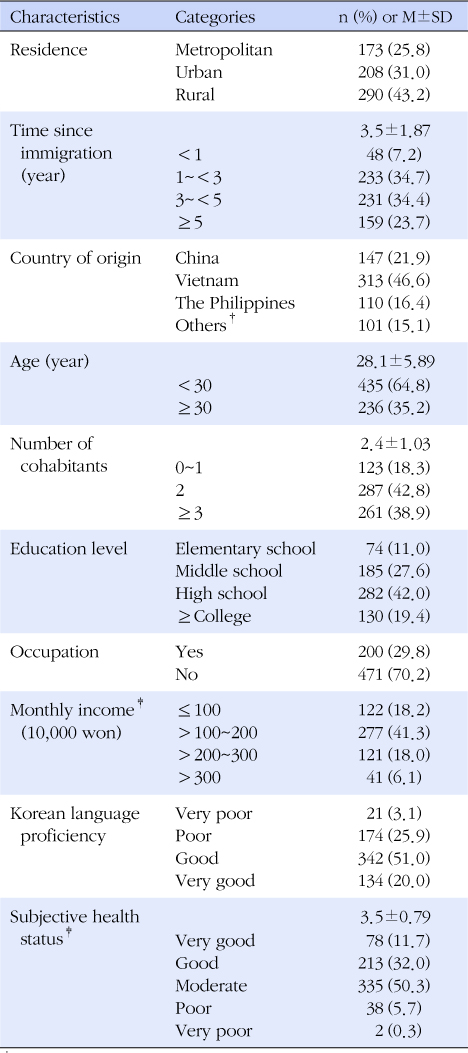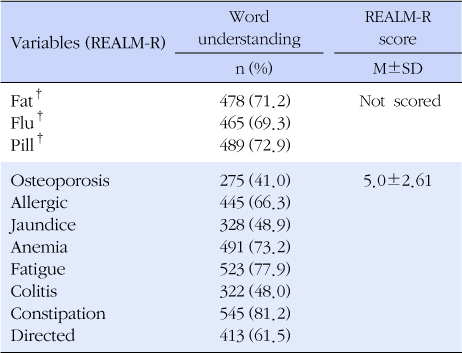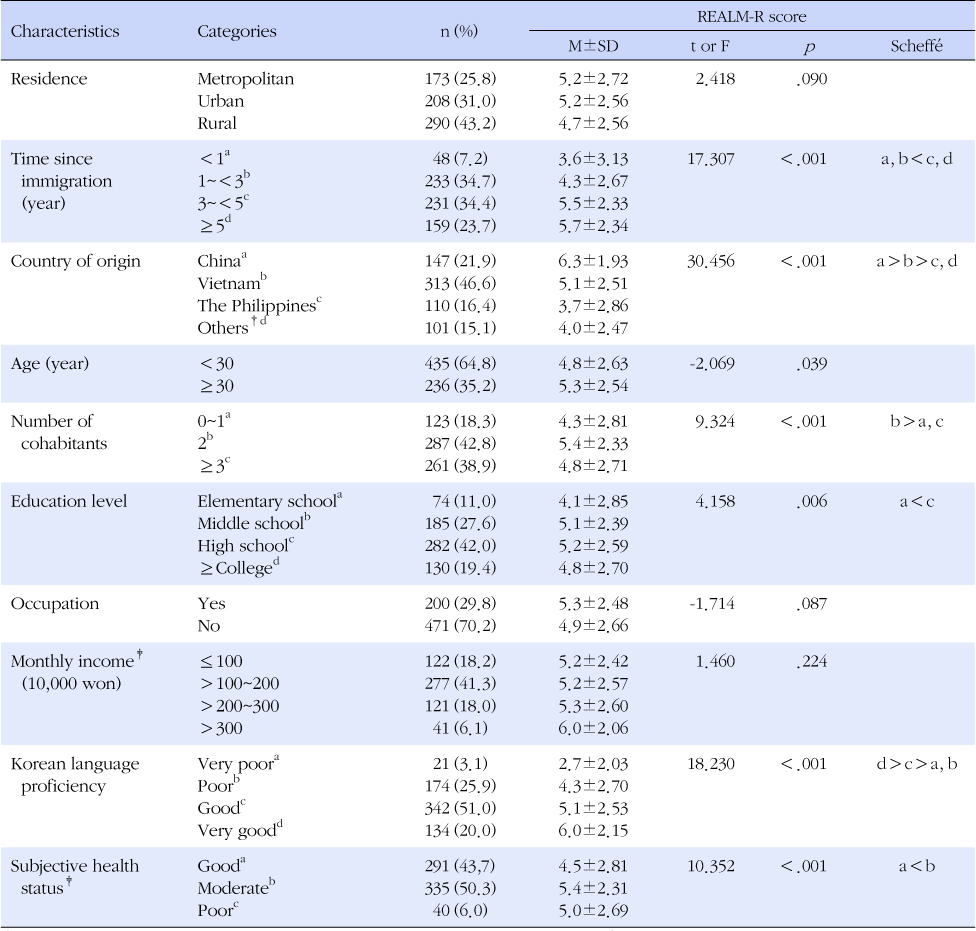References
1. Ad Hoc Committee on Health Literacy for the Council on Scientific Affairs. Health literacy: Report of the council on scientific affairs. JAMA 1999;281(6):552–557.
2. Andrus MR, Roth MT. Health literacy: A review. Pharmacotherapy 2002;22(3):282–302.
3. Bass PF, Wilson JF, Griffith CH. A shortened instrument for literacy screening. J Gen Intern Med 2003;18(12):1036–1038.
4. Cohen J. Statistical power analysis for the behavioral sciences 2nd ed.th ed. Hillsdale, NJ: Lawrence Erlbaum Associates; 1988.
5. Davis TC, Long SW, Jackson RH, Mayeaux EJ, George RB, Murphy PW, et al. Rapid estimate of adult literacy in medicine: A shortened screening instrument. Fam Med 1993;25(6):391–395.
6. Garbers S, Chiasson MA. Inadequate functional health literacy in Spanish as a barrier to cervical cancer screening among immigrant Latinos in New York city. Prev Chronic Dis 2004;1(4):A07.
7. Institute of Medicine. Health literacy: A prescription to end confusion (2004004829) Washington DC: The National Academies Press; 2004.
8. Jastak S, Wilkinson GS. Wide range achievement test-revised 3 Wilmington, DE: Jastak Associates; 1993.
9. Jeong KW. A study on the linguistic ability and cultural adaptation of female married immigrant in Korea. Teach Korean Foreign Lang 2009;34:89–111.
10. Kim HR, Hwang NM, Chang IS, Yoon KJ, Kang BJ. Reproductive Health Status And Policy Agenda Among Marriage Immigrant Women In Korea (2008-66) Seoul: Korea Institute for Health and Social Affairs; 2008.
11. Kim HR, Yeo JY, Jeong JJ, Baek SH. Health status of marriage immigrant women and children from multicultural families and health policy recommendations (2012-10) Seoul: Korea Institute for Health and Social Affairs; 2012.
12. Kim SK, Kim YK, Cho AJ, Kim HR, Lee HK, Seol DH, et al. A survey on multicultural families in South Korea (2010-06) Seoul: Ministry of Health, Welf Fam Affairs, Ministry of Justice, Ministry of Gend Equality, Korea Inst Health soc Affairs; 2009.
13. Kim SS, Kim SH, Lee SY. Health literacy: Development of a Korean health literacy assessment tool. J Korean Soc Health Educ Promot 2005;22(4):215–227.
14. Korea Centers for Disease Control and Prevention. Marriage immigrants and international collaboration cohort II Seoul: Ewha Womans University; 2011.
15. Korea Immigration Service. Annual statistics 2012 Seoul: Author; 2013.
16. Kreps GL, Sparks L. Meeting the health literacy needs of immigrant populations. Patient Educ Couns 2008;71(3):328–332.
17. Lee HS, Park HJ, Lee SJ. A study on the adult literacy in Korea and international comparative survey among OECD countries. Korean J Comp Educ 2003;13(2):193–219.
18. Lee SH, Chang KH, Han HS, Park BK, Kim SS. The relationship of health literacy of female married migrants in Busan with their attitudes towards health. Female Stud 2012;22(1):165–200.
19. Lee SH, Choi EHR, Je MJ, Han HS, Park BK, Kim SS. Comparison of two versions of KHLAT for improvement strategies. Korean J Health Educ Promot 2011;28(3):57–65.
20. Lee TW, Kang SJ. Health literacy in the Korean elderly and influencing factors. J Korean Gerontol Soc 2008;28(4):847–863.
22. Ministry of Health and Welfare. Guidelines for community health promotion project Seoul: Author; 2013.
23. Nguyen GT, Bowman MA. Culture, language, and health literacy: Communicating about health with Asians and Pacific islanders. Fam Med 2007;39(3):208–210.
24. Park JY, June KJ. Influencing factors on functional health literacy among the rural elderly. J Korean Acad Community Health Nurs 2011;22(1):75–85.
25. Ratzan S, Parker RM. Introduction. In : Selden CR, Zorn M, Ratzan S, Parker RM, eds. Current bibliographies in medicine: Health literacy Bethesda, MD: National Library of Medicine; 2000. p. 5–7.
26. Song ES, Choi YR. Maternal and perinatal problems and prognosis of newborns in marriage immigrant women In : Paper presented at the meeting of the Korean Society of Maternal and Child health. Seoul; 2008. 11.
27. Yang SJ. Health status, health care utilization and related factors among Asian immigrant women in Korea. J Korean Acad Public Health Nurs 2010-a;24(2):323–335.
28. Yang SJ. Prevalence and risk factors of anemia among Asian immigrant women in Korea. J Korean Data Anal Soc 2010-b;12(5):2579–2593.
29. Yang SJ, Kim JA, Kim SN, Choi HY, Park CS, Dahn HJ. Health concept, health status and health service utilization of marital immigrant women in urban and rural areas in Korea (09-37) Seoul: Ewha Womans University, Management Center for Health Promotion; 2009.
30. Yang YM, Wang H. Life and health concerns of Indonesian women in transnational marriage in Taiwan. J Nurs Res 2003;11(3):167–176.



